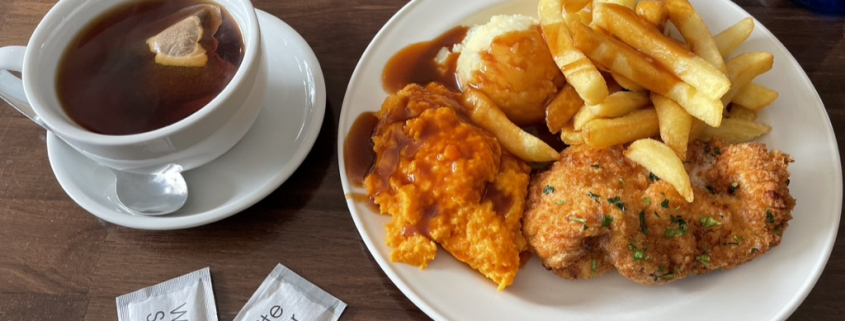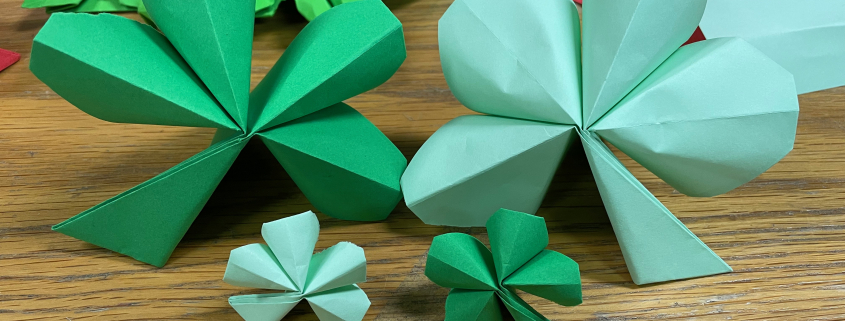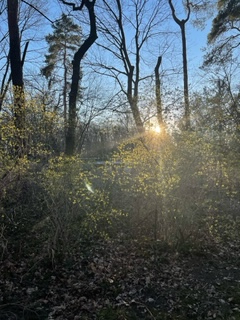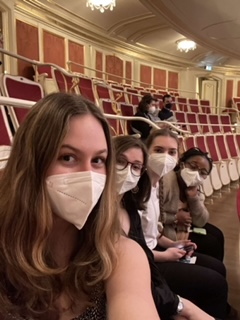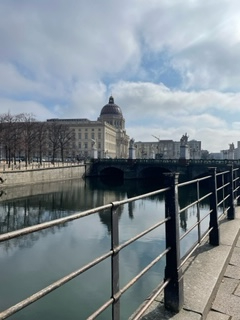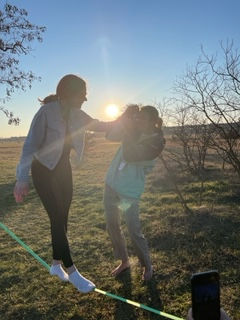Puerto Ricans in London
/in London 2022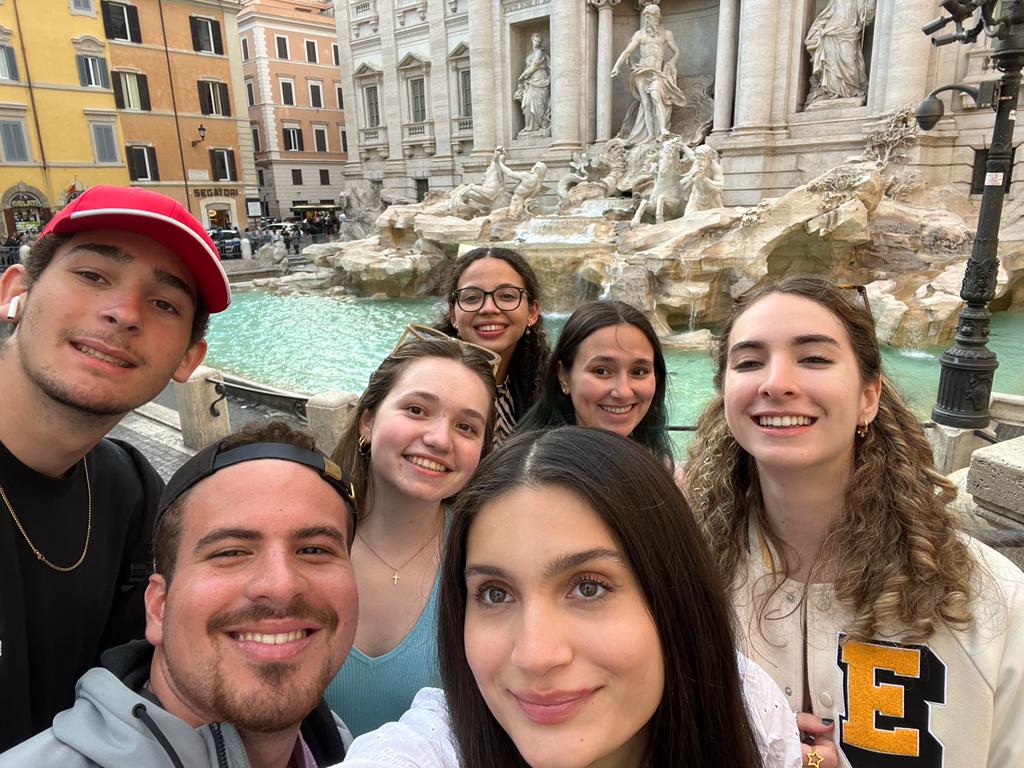
I expected that upon coming to London, I would learn a lot about UK culture, and I have. I am proud of the way I have changed to fit in and become comfortable with the way of life in England. However, I am even more impressed with the changes that have occurred in my relationship with my own culture. I have grown to understand the American culture and the ways it differs from that of Europe.
Most of all, I am proud of how I have grown in my relationship with Puerto Rican and Latin American culture. I have always tried to stay in touch with my culture by learning Spanish and spending time with other Latinos when I can, but the only other Puerto Ricans that I have ever been close to have been my family.
I was placed with my flatmates randomly, and Karla just happened to be one of them. She was born and raised in San Juan, and is as Puerto Rican as you can get. We immediately had something in common and quickly became friends.
Since then, we have had many conversations about our culture, the aspects that we share, and those that we don’t. We have discovered a part of our culture together by going to salsa classes. Karla has pointed out things about me that I never would have attributed to being Puerto Rican, but very well could be a product of culture. She has taught me a ton, and I have taught her a few things. On just the surface level, we speak the same language and have the same comfort foods, but culture goes a lot deeper than that.
Our other American flatmates have commented on more than one occasion how gracious of a hostess Karla is. No matter how briefly someone enters our flat, they are always offered juice, water, or coffee at least once. As it is with most Latinos, her family is the most important thing in the world to her. Not only that, but family doesn’t just mean blood. In Puerto Rico, any older person in your life can be your grandma or your aunt.
I know a lot about Puerto Rican culture, and I am learning more every day, but there are some things I will never fully understand. We don’t really learn about the history of PR or its status in relation to the United States government in school, but the topic is on the minds of many Puerto Rican residents. The trauma of living through Hurricane Maria still lives in the cultural memory of the island, and they still deal with random blackouts in electricity. I can sympathize and listen, but I will never know what that’s like.
This week, I joined Karla on a trip to Italy with her brother and some of their friends. They are all very nice, and I’ve had a great time, but it hasn’t been without its difficulties. Even though I am also Puerto Rican, I am decidedly the cultural minority in the group because I didn’t grow up on the island. My Spanish serves me well, but it’s not perfect. There have been times when I’ve been lost. It’s not a good feeling to sit at a table with a group of people talking and laughing and not being able to understand or contribute. I have to remind myself that it’s ok to make mistakes and ask questions, and I’ve learned a lot in just a few days.
This experience has opened my eyes to how so many people must feel. I have so much admiration for Karla and other international students I know who use their second language all day. It can be exhausting and frustrating. I felt so grateful whenever someone noticed that I was confused and took a second to explain something to me.
It was totally by accident that Karla and I even met, but I couldn’t be more glad that we did. Not only because of how much I’ve grown but because she is an amazing flatmate and friend.
Culture Chat
/in Limerick 2022Living in Ireland has shown me many differences between the American culture, which I am used to, and the Irish culture. I have been able to talk through some of these difference with my good friend, Wibke. She is from Germany, which allows her to see the culture here from a different perspective. We found that the cultural topics we talked about the most where food, clothing, and transportation.
Food
Wibke was telling me, that in Germany, they have three main meals and a time in the day to have a warm drink and bread and cake for special occasions. I am used to having three main meals in my day as well. That is common in American culture. When I was a kid, we had snack time at 3:00pm. That was the best time of the day. We would get home from school and have a snack with Mom before starting our homework. My favorite snack times were when it was cold and snowy out so Mom would heat up water with the kettle on the stove for hot chocolate. As I have been getting older, snack time is not very consistent. I would say that this is a difference between our two cultures, but I would be very happy to adopt this bread break into my afternoons.
We also shared how our lunches are different. I am used to lunch being a sandwich or some sort of cold lunch. I do not exclusively have a cold lunch, sometimes I will eat something warm, but most of the time, supper is the meal I put the most effort into making. I have a warm supper that is usually larger and takes longer to make than my lunch. Wibke is used to lunch being a warm and larger meal. Bread is eaten with most of her meals and potatoes are a common addition in her house.
In Ireland, bread and potatoes are very common for meals. One time, I ordered garlic breaded chicken and they gave me mashed sweet potatoes, mashed potatoes, and chips (french fries) also. Tea is also a very popular drink in Ireland while ground coffee is less popular (I miss ground coffee. I am tiring of instant coffee and going out for an espresso drink is expensive.)
Clothing
It is hard to miss the clothing differences between the Irish people my ago and the people my ago back home. There is almost a uniform for Irish guys: athletic pants, a sports shirt, and the standard Irish guy haircut often called a fade cut (this is of course not a haircut exclusive to the Irish, it is just very popular). The day time outfits for Irish gals has a little more variety. The going out outfits are the most interesting. Guys will were almost the same thing in the day as they will when going out to the pub or club. The gals will put on their fake tan, eyelash extensions, and short bodycon (formfitting) skirts and dresses before heading to the pub and club.
In Irish culture, they are very conformist in the way they dress. This is different in German and American cultures. Trends are still very popular in both, but people are more open to express different senses of style. The German people may be better dressed though. In Ireland and the United States, people will wear athletic clothes as every day wear instead of solely for athletics. In Germany, it is more common for athletic clothes to be worn solely for athletics.
Transportation
I use the bus a lot more in Ireland than I ever did in the United States. I rode a school bus to school as Wibke did in Germany, but that stopped as soon as I went to high school. In the United States, a person can acquire a drivers license at the age of 16. It is very common for 16 year olds to be driving to school in the United States. In Ireland, a person needs to be 17 years old before a drivers license can be acquired. In Germany, the age is 18. This means that taking public transportation to school is much more common in Ireland and Germany. When I need to get somewhere, I drive. When Wibke needs to get somewhere, she will most often bike. Americans drive more than Europeans because the gas is almost half the cost and many areas are not made to support walking or biking as a primary form of transportation.
I hope you enjoyed learning a few of the cultural differences and similarities that I have noticed. Let me know if there are any other topics you would like me to learn more about or share.
Looking Back and Forward
/in London 2022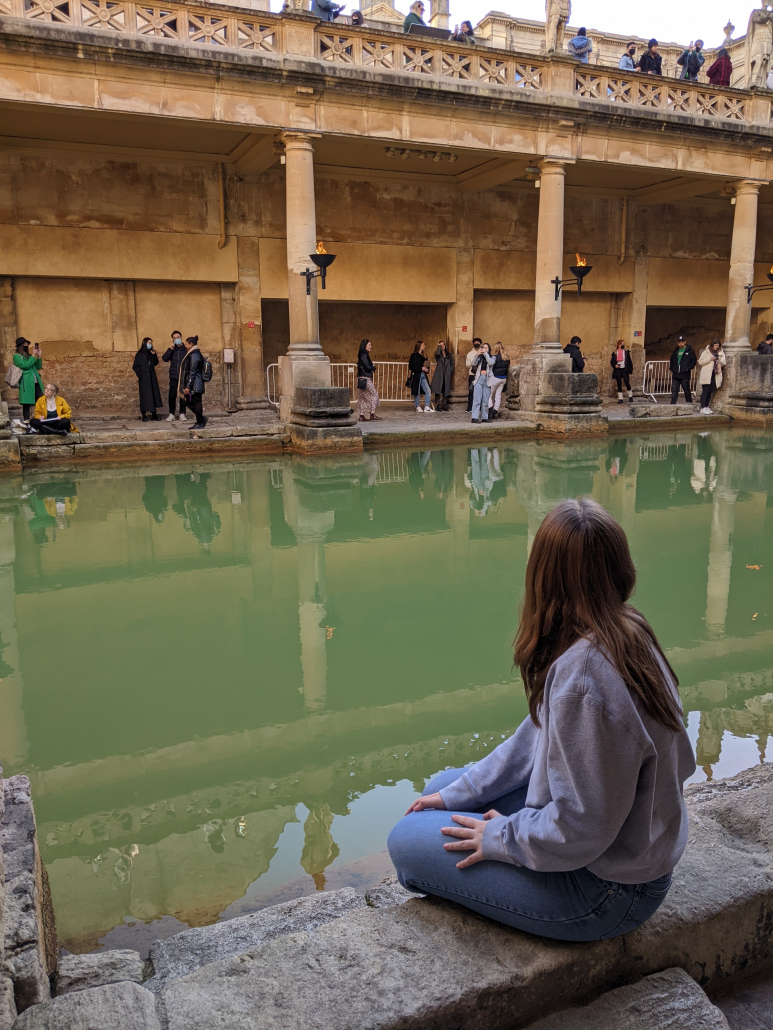
Study abroad is only four or five months, so it’s important to be intentional. Everyone I’ve met talks about making the most of their time in Europe. They want to travel as much as possible, make as many friends as possible, and have as much fun as possible. But it’s not just about doing the most; it’s about working toward your goals systematically. I know that I can’t just live willy-nilly and expect to have a feeling of closure at the end.
Now that I have reached the halfway point of my time in London, I want to look back at how far I have come. Altogether, I am immensely proud of my growth in the past few months. I came to another country by myself and have managed to build a full life. I have balanced academics, a social life, and everything that comes with living in a big city. Not everything has been easy and life is stressful at times, but I’ve made it my goal to push through and enjoy every moment.
One of my goals before leaving was to widen my political and social viewpoint. One of the biggest roadblocks in communication is the inability of one party to see things from the point of view of the other. By living among people from another culture and country, I have become acquainted with their point of view. I have seen their reaction to the pandemic, worker strikes, and the crisis in Ukraine. With my knowledge about world events coming from multiple sources, I have formed more well-rounded views. And even when I don’t agree, I have developed the important skill of staying civil and finding common ground where there seems to be none.
I don’t want to make it sound as though study abroad is all sunshine and rainbows. It is true that my experience has been overwhelmingly positive, but there are some regrets and things I want to do differently in the future. The culture in England makes it tough to reach out and make friends with locals because they can seem quite cold towards strangers. However, most are very nice when you get to know them a bit. Going forward, I want to talk to more locals. It would be a shame to live in London for five months and not do my best to get to know the Londoners. They are the people who make the city what it is.
Because of the way classes are structured in the UK, I only have a week of actual instruction left. After that we have a few months to turn in our final essays. However, I have a class that starts in the second half of the spring semester. The classes I have had were enjoyable, but I will admit that I did not always give 100% effort. Sometimes if I was tired or didn’t feel like talking I didn’t participate much in class. During the next few months as my last class starts, I want to really engage with the material and apply it. My teachers are experts in the material, so I want to really utilize them as a resource and be an active student as much as I can.
My third goal for the second half of my time in London is to be more intentional about my time. I want to make more of an effort to plan out my days and weeks in advance. This will allow me to get more done and have more time for everything I need to get done. I have implemented a no-phone-in-the-morning rule. I set two alarms: one to wake up, and one for an hour later. At the first one, I wake up and start my day; and I am not allowed to check my phone until the second one goes off. So now, instead of wasting an hour on Instagram in the morning, I have that hour to get ready and start my day off on the right foot.
I knew that the UK education system was different before I came to London, but it was different in a way that I didn’t expect. I had an idea in my head that British school was formal and stiff and serious. The reality is actually the opposite. Most university instructors are simultaneously conducting their own research or pursuing PhDs. They are called by their first names. There is also less pressure to attend class and a lot of students don’t seem to put a lot of effort into their studies. This threw me off at first because it made me feel like I stood out for participating in class, but I now understand that classes are more casual because of the emphasis on independent study.
Something that I didn’t expect to improve on, but did, is my general life skills. I go grocery shopping every week, I cook all my own meals, I navigate public transportation, and I make all those little decisions that are necessary every day. This has also improved my confidence because I know that I can be independent and live on my own.
I have undergone many changes in opinion in the past few months, but my opinion of myself has changed the most. When I was totally in my comfort zone, I never had a reason to have a strong personal identity. Now that I am among people who are different than me, I know who I am. I am an American, I am studying teaching, and most importantly, I am a Christian. I am sure that without being strong in these truths, and unashamed of them, I would not have the confidence or drive that I have now.
Halfway Home
/in Limerick 2022I am half way through my time abroad. That means it is time to evaluate my experience and see what I would like to focus on for the rest of my time in Ireland.
1. How do you feel about your experience so far? Why?
My experience has been very positive. I am learning new information related to my degree in my classes, I am making friends, and I am learning more about Ireland. Classes are different than at Martin Luther College. Part of the differences are due to COVID-19. All of my larger lectures are online. Every once in a while, a lecture or tutorial will be online due to the instructor needing to quarantine. Classes are also divided into lecture periods, labs, and tutorials. If you want to learn more able that, check out my blog entitled, “Seashore Studies.” The University of Limerick has many clubs and societies. I am taking part in the craft society. We meet once a week to do a craft, like making origami shamrocks, or a hangout where everyone brings the project they are working on. I have made a friend through craft society and hope to make more. I have made friends through my Ecology and Inclusive Education classes and I made a friend through the University of Limerick Buddy Program that I joined. It took a little longer to meet friends than I was expecting, but they are worth the wait. We have explored Limerick together, and gone on trips offered through the University of Limerick. I really like seeing different parts of Ireland. It is one of the best ways to learn about the county.
2. Which goal have you made the most progress toward?
When I made my goals for studying abroad, I was still at home. I did not know what to expect. This lead me to make very general goals that I felt confident I could achieve. Within the first week of arriving in Ireland, I was wondering what in the world I was doing. Why did I want to do this? What am I doing here? What was I thinking? This was always the plan though. I had this plan since I was in high school. I was serious about this plan freshman year of college when I started planning when I would take all my classes. My plan, from the start, was to go alone. When I started wonder why I was here, I tried to think of all the reasons I wanted to study abroad. This lead me to add on to my goals from my experience studying abroad by including goals to further my teacher education, increase my confidence, and experience public university.
I have been doing the best with my academic goals. I am learning a lot. I am continuing my teacher preparation. I am learning more about Ireland. I am learning about different cultures and even learning more about myself.
3. What are 3 areas that you can improve on for the second half of your time abroad?
Going forward, I want to focus on deepening relationships, spending more time on the campus of the University of Limerick, and grow in my faith. I have made friends, now I want to make sure I am spending time with them. It is hard when I don’t have class with some and others I only see in class. By asking people to go grab a tea or coffee, study together, or go for a walk, I can get to know my friends better. All of those can be done on the University of Limerick campus. It is a beautiful campus and I want to spend more time appreciating it. I have adopted the habit of working on assignments in my room when there is a perfectly good library to use. There as so many flowers on campus to enjoy too. They are a reminder to me that I want to be growing in my faith at all times.
4. What surprised you? What have you improved on? How have your opinions evolved?
I think my biggest surprise has been the night life. It is common for students to go out any night of the week and come back around 1:00, 2:00, or even 3:00am. The culture here lends itself to later nights since many morning actives will not start until 9:00am. Being exposed to a different college life culture than I am used to has helped me to improve my openness and listening skills. I am able to see how different people live and I see value in how they do things differently than me. I am able to listen and try to understand people better now as well. My opinions have changed while being here even in the small things, like with the weather. I used to not like the time right after it rained. It felt humid and everything was wet. It bothered me. In Ireland, after it rains, it is so nice. After the rain, the air smells fresh, and the sun comes out to reveal a rainbow. It has changed my opinion.
With half my time studying abroad behind me, and the other half in front of me, I have good memories and many more to make. This next half will include more school work, as assignments are coming due. It will also include deeper connections, and more learning. I will be happy when the time comes to return home, but for now, there is more to do.
Halfway Done and Not Ready to Leave
/in Berlin Spring 2022I just made it through midterms. My Art and Dictatorship Exam went well, and my German exam was pretty good. I am finding my listening comprehension to be a repeating difficulty. There are many words I still do not know, so it makes it difficult to understand. I talk much more German with my host now, but I only see her for an hour or two each day, so there is not much time to talk. So far, I think my experience in Germany has been great. In the beginning, there were a lot of ups and downs, but I think I have found a good place here. I miss MLC a lot, but I’m trying to really focus on and appreciate my time here. I feel a weird mixture of my time here is going slow, but it is also going really fast. I only have 62 days left, and I feel like I still have so much to learn. I have been focusing on being intentional about putting myself outside my comfort zone so that I can learn as much as possible. This is easy to do, though, because of the language barrier. I had many goals about improving my German and working on my faith while I am in Berlin. I think I have learned to be patient with myself. It takes time to improve in learning a language. It also takes a lot of faith to stand firm when you are put into an environment where you are different from others. My faith has definitely grown substantially since arriving here. I have been able to go to a church here, and I really like it. I’m sad that I won’t be able to go to it this Sunday, because I am on a class trip to Köln (Cologne), Germany. I have become friends with a Ukrainian refugee and her children, who go to the same church. I read the Bible on the way to school every day, and sometimes on the way back too. The 45-minute commute has made this incredibly easy.
In the second half of my time here, I want to speak more German with my friends. We all have varying levels of German, but I think it would be fun, and we would all get practice. I have also decided that I will go through some of the German materials I have from an online book from my German classes at MLC. So far, we have mostly just talked about grammar topics, I know, and I want to keep moving forward. I also want to ask more questions. By nature, I really like to listen to others talk, but as long as I’m here, and I have native Germans around me, I should take this opportunity to ask as many questions as I can.
While I’ve been here, I have definitely improved my confidence to speak German. I don’t think I’ll fully realize how much I’ve improved until I come back to my German classes at MLC. I have definitely become comfortable with parts of German culture. The most notable one would be the kind of community view of life in contrast to the focus on individuality in the U.S. It is really nice to be in a place where there is a lot of care for others around you. I also love the diversity of different cultures here. Most people here can speak three languages with varying proficiency, and knowing Spanish has made me feel like I fit in even more. Something that has surprised me is how attached I am becoming to Germany. I definitely do not want this opportunity to be the last time I am here. I am writing this on my class trip to another area of Germany, and I am really excited to be outside of Berlin. I hope to come back to Germany one day, and hopefully, next time, I won’t be alone!
Image 1: This is some friends going to an opera.
Image 2: This is the water that makes Museum Island.
Image 3: This picture is of my friends and I at Tempelhof Park, continuing to work on our slack lining.

